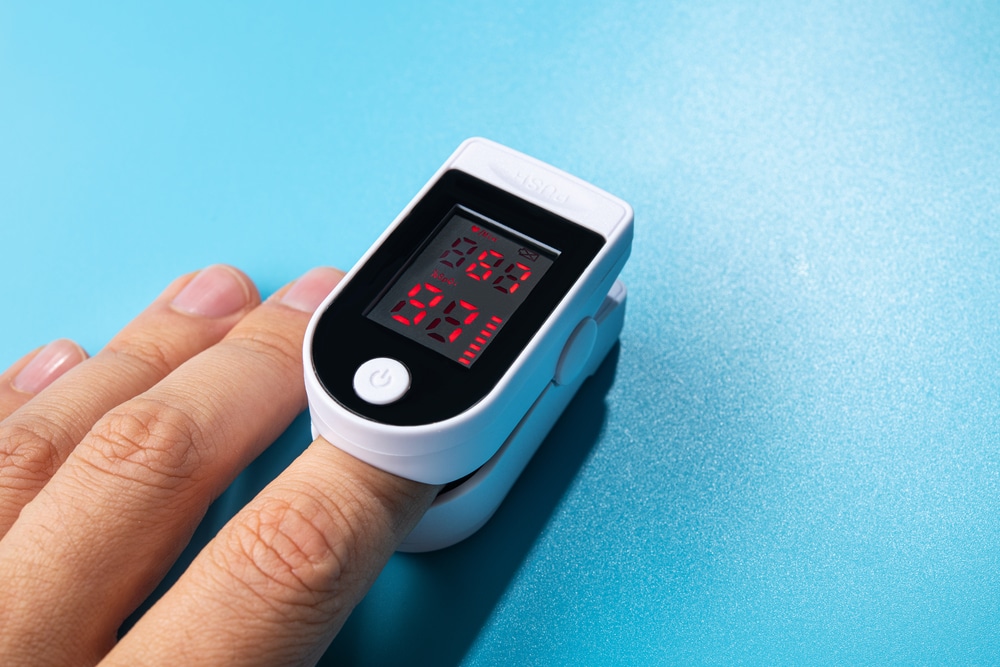Oxygen is one of the essential building blocks of life. Without oxygen, the human body can’t function. Oxygen saturation levels are a way of measuring how much oxygen is in the bloodstream. While most healthy individuals don’t need to monitor their oxygen saturation level, people with certain health conditions or athletes looking for peak performance can benefit from tracking oxygen levels.
Here, we’ll explore everything you need to know about your oxygen saturation level.
What Is Oxygen Saturation?
An oxygen saturation level is the measurement for the amount of oxygen in your bloodstream. All organs in the human body need oxygen to function. Oxygen saturation refers to the percentage of hemoglobin that is bound to oxygen when in the artery. Hemoglobin is the protein in red blood cells that binds oxygen, carbon dioxide, and carbon monoxide.
Since arterial blood is on the way to the capillaries from the left ventricle of the heart, a high amount of oxygen is expected on hemoglobin, typically greater than 95% saturation. This oxygen is what is required for metabolic processes, namely ATP production, which provides the energy necessary for vital functioning of organs. Reduction in oxygen carrying capacity often results in altered or diminished function, which can lead to acute or chronic disorders.
What Is a Normal Oxygen Saturation Level?
Oxygen saturation greater than 95% is considered normal. Values between 90-95% represent a slightly blunted capacity to carry oxygen, and may or may not be indicative of a meaningful deviation from normal.
However, oxygen saturation below 90% (hypoxemia) is considered low and usually suggests an abnormality in oxygen handling. Oxygen saturation levels are affected by a variety of agents including the amount of oxygen in the air around you, certain respiratory diseases, and nutrient deficiencies.
How Is Oxygen Saturation Measured?
Oxygen saturation is measured using a pulse oximeter, commonly called a pulse ox. Readings from this type of test are measured as SpO2. You may not recognize the name, but you’re probably familiar with these devices. A pulse oximeter is the tool that doctors and nurses place on your finger, typically when they’re also checking your blood pressure.
These devices use photoplethysmography (PPG). PPG utilizes red and infrared light exposure through the skin, which absorbs much of the light. Each form of hemoglobin (unbound or bound to oxygen, carbon dioxide, carbon monoxide) absorbs wavelengths of light differently.
Oxygenated hemoglobin absorbs more infrared light, whereas de-oxygenated hemoglobin absorbs more red light. This helps us determine the amount of oxygenated hemoglobin relative to total hemoglobin which is expressed as a percentage.
You can attach the pulse oximeter to fingertips, ear lobes, or toes to get a reading. The test has a margin of error of 2%, meaning it’s less accurate than the arterial blood gases (ABG) test, which is a blood test that measures the acidity, or pH, and the levels of oxygen and carbon dioxide from an artery. Dark nail polish colors and temperature can affect the pulse ox readings. Though it’s not as accurate as the ABG test, it is a non-invasive way to get a quick SpO2 reading.
The devices are affordable and can be purchased for use at home if you’re trying to monitor your blood oxygen saturation levels regularly. The Biostrap Recover Set features a wrist-worn device that utilizes PPG to measure various biometrics, including SpO2, with clinical reliability making it easy to track your oxygen saturation levels while you sleep.
Stay on Top of Your Health
Low oxygen saturation levels can be a sign of an underlying health condition. The problem may be caused by a chronic condition or by environmental factors including smoking and pollution. The best way to manage your health is to monitor it regularly.
Biostrap provides all the tools necessary to accurately monitor your oxygen saturation levels right on your phone. While the wrist-worn device captures your SpO2, among other vital biometrics, with the use of advanced machine learning algorithms, the app offers easy-to-understand and actionable insights into weekly, monthly, and yearly trends. Additionally, you can monitor every single point of data collection that occurred throughout the night, which can help you determine potential dips in your SpO2 levels. These may even call for medical consultation with regards to a sleep disturbance such as sleep apnea events.



